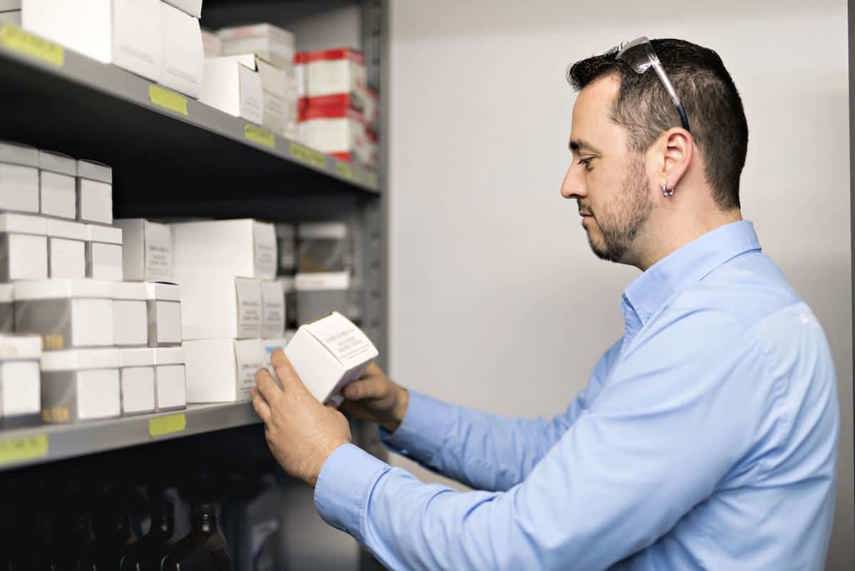
This article was updated in March 2023 to reflect current trends and new information.
In certain industries, recall rates are high enough to be factored in as part of the business process. Recalls are particularly pertinent to automotive, food and medical industries costing companies billions of dollars. However, even the most diligent business operators are exposed to product recalls regardless of industry and whether you are a manufacturer.
Recalls can be caused by product issues or health and safety concerns, and they can be a costly affair for any affected business.

What is a product recall?
A product recall is essentially the process of pulling a certain product off retail shelves and online stores because it is faulty or hazardous in some way. Obviously, this is the last thing a business wants after going to the effort of manufacturing and distributing products, but it is not an uncommon occurrence.
In the United States, for example, the instances of product recalls have been on the increase since the 1980s. In 1988, the U.S. Consumer Product Safety Commission was involved in some 221 recalls, and by 1993, that number had risen to 367 recalls.
Product recalls usually occur because during the manufacturing process, a faulty component of the product has gone unnoticed, or perhaps the hazardous nature of the product was only realised once a consumer reported a bad experience.
This type of situation has obvious negative consequences for business: customer dissatisfaction, potential legal issues, decreasing sales, and of course, the loss of the cash assets tied up in now obsolete stock that cannot be sold for a return. This can mean the business is left with an excess of inventory which is no longer sellable, leading to decreasing profitability.
3 Ways to Minimise Negative Impacts of a Product Recall
For these reasons, we identify three effective ways to minimise the negative impacts of product recalls on your business.
1. Planning and preparation
If you fail to plan, you plan to fail. This platitude is unfortunately so true for when it comes to product recalls. Being prepared is crucial to limiting the damage to your business in the event of a product recall.
To this end, product traceability is key. This allows a business to isolate the problem and know what and where inventory stock is affected. The use of batch tracking will provide your business with vital information around the inventory stock related to every batch of your product.
This can help immensely to ensure the recall goes smoothly, communicate the problem to key stakeholders and to reassure your customers. Any delay in announcing a recall or the failure to take prompt measures will not minimise negative impacts on your brand and can turn into a PR nightmare.
2. Communication
If your customers and key stakeholders see that you’ve communicated clearly and acted quickly, you can minimise the negative impacts of a recall upon the credibility of your brand and business. By doing so, you control the narrative as opposed to disgruntled customers or the media doing so instead and take greater charge of a recall crisis.
Recent statistics highlight how crucial swift and clear communication concerning a recall of products can be, where over 90% of consumers said that they believe how a company handles a recall indicates whether they care more about profits or customer safety.
In the same study, more than 80% of customers indicated that they would be more inclined to purchase products from companies that they perceived had handled recalls in an honest and responsible way.
Utilising a reliable batch tracking system enables a business to respond in a prompt and professional way when a recall is actioned.
Once you identify where the products or inventory stock are, your priority should be to inform your customers about the recall procedure and ensure their safety, so that you can limit any damage concerning the perception of the brand and business.
3. Reverse logistics
In a product recall, businesses need to retrieve all affected products, so you’ll need to be ready for all the returns coming in.
When you’re planning the logistics around a recall, you’ll need a procedure.
Think about where and how your customers will return the items and your refund process. Should they send the faulty products to your warehouse, or to your manufacturer? Perhaps your recall plan will depend on your supplier and their return procedures?
By setting up a procedure for the recall process, you’ll be able to save time and money. Implementing batch tracking into your inventory management system will see your business better able to locate the affected batches and inform your customers of how to go about returning the recalled products.
Since you’ll have a record of the affected batches, you can track your returned products as they come in and even follow up with customers who did not respond to your first recall notification, highly minimising negative impacts of a product recall.

How can business managers handle product recalls effectively?
So, if this happens, what can business owners do to mitigate the risks and associated consequences of a product recall?
Tip 1: Invest in inventory software
Our first step in dealing with a sticky situation like a product recall is to invest in good quality inventory management software. Inventory software will allow you to track all of your products in real-time, from any device with an internet connection. By having this oversight of your products, the recall process will be much quicker, and it will be much easier to identify where the product has been distributed. Like pulling off a band-aid, you want the process of a product recall to be done as quickly and painlessly as possible.
Good inventory management software will also allow you to batch and serial track your products so you always know exactly where your products are.
Tip 2: Step up your customer service
When something goes wrong like a product recall, customers need reassurance that the business is doing all they can to resolve the issue. We advise stepping up your customer service and ensuring the company is staffed to the level required to deal with the inevitable influx of customer queries, concerns and complaints in a timely and polite manner.
Tip 3: Pay careful attention to your manufacturing processes
A product recall can teach you, as a business owner, the valuable lesson of the importance of attention to detail. While many new business owners are often in a rush to ‘make things happen’ it is important to take your time and be thorough when producing and distributing every type of product you sell — this is the best preventive measure you can take to avoid another product recall.
How to survive a product recall
Here are some tips on how you can prepare and mitigate a potential product recall.
1. Track and trace raw materials
Often, the reason for a faulty product is faulty parts of which there could be thousands, if not millions located at different points in the manufacturing chain or over different sites.
Inventory management software allows for accurate tracing of even the smallest of parts if they are indeed faulty in order to prevent their use in the product. This could be done manually, however the process becomes a lot easier and more efficient with the help of inventory software.
This is particularly true if the company operates over many sites with supplies from all sites originating from the same place. Inventory software also allows for the electronic ‘marking’ or ‘tagging’ of these faulty parts for investigation or destruction and thereby prevents their use in any other product.
2. Track and trace shipped product for recall
As soon as issues with shipped or distributed product becomes apparent, the consumers must be informed (in the name of best practice) to ensure public safety is maintained.
This becomes an impossible task if there is no record of which products have been shipped and bought or consumed in which countries. Inventory management software allows this process to happen relatively easily as it is possible to track item numbers of products and ascertain where they have been shipped to and bought from.
Consumers can then be quickly contacted to warn them of the faulty products and subsequent danger to themselves and their families.
3. Identify impacted products
Inventory management software such as Unleashed is designed to make inventory management more streamlined.
This has a vital part to play in a product recall when stress is high, jobs are in jeopardy and the task of actually recalling seems too daunting. The software is there to aid the management team in identifying and where the product is and reclaiming it.
It is imperative these processes are followed, as failure to do so is pure negligence and can result in serious harm to the public as well as irreparable damage to the company’s reputation.
4. Subsequent investigation and prevention
Inventory software could prevent a product recall from happening again. It is inevitable to climb the paperwork mountain after a faulty product is identified, however this task is made all the more manageable with the ability to identify all raw materials in the product, where they originated from, their expiry dates and any other known issues.
Once a clear picture is drawn of why the faults happened in the first place, the company is in the best position to respond to customer concerns and prevent future recalls from happening.
